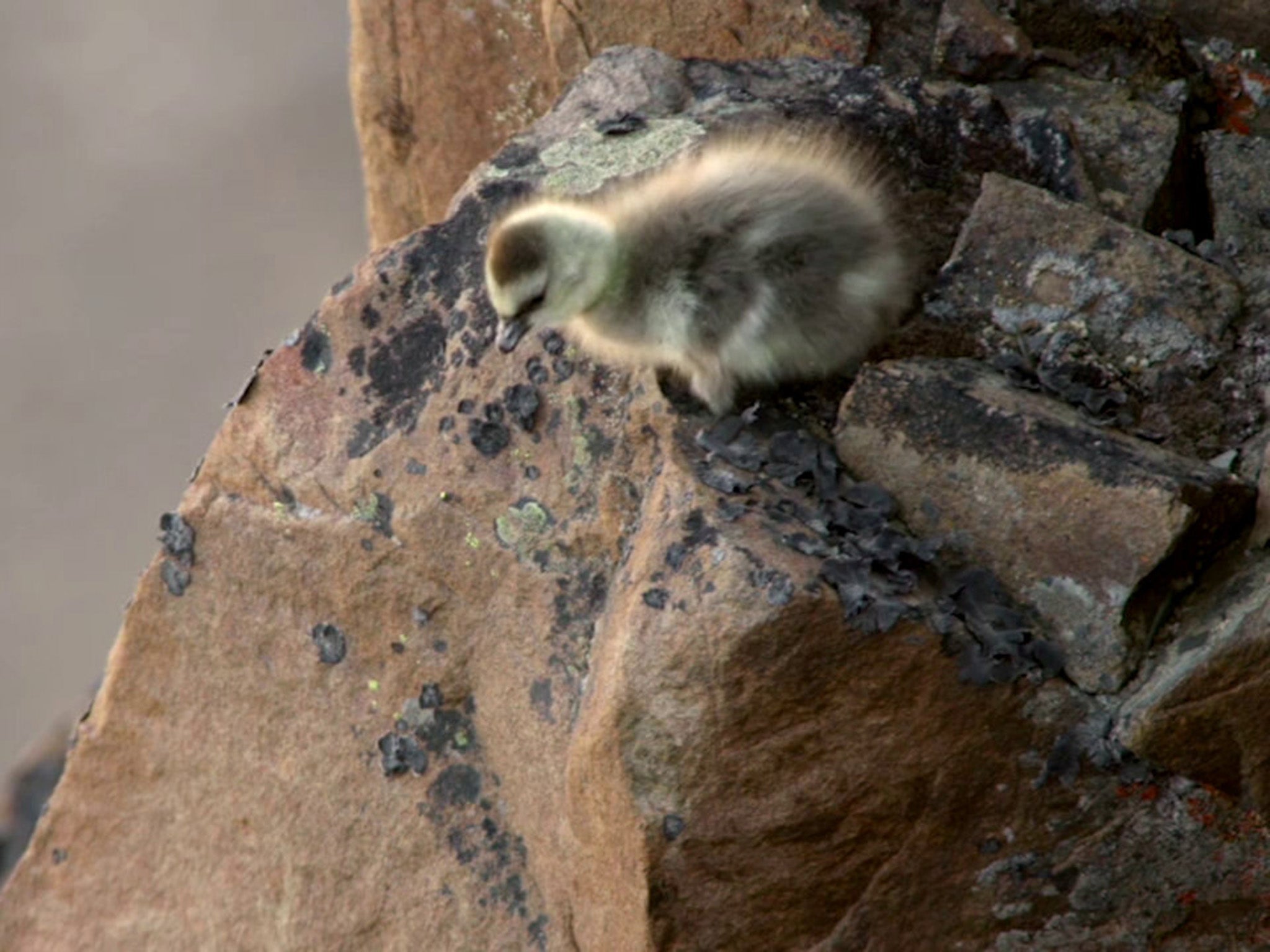Bear Grylls’ cameraman films day-old goslings jump off 400-feet cliff in search of food
Barnacle geese nest high in Arctic cliff to avoid predators and must take extreme plunge to begin lives

Your support helps us to tell the story
From reproductive rights to climate change to Big Tech, The Independent is on the ground when the story is developing. Whether it's investigating the financials of Elon Musk's pro-Trump PAC or producing our latest documentary, 'The A Word', which shines a light on the American women fighting for reproductive rights, we know how important it is to parse out the facts from the messaging.
At such a critical moment in US history, we need reporters on the ground. Your donation allows us to keep sending journalists to speak to both sides of the story.
The Independent is trusted by Americans across the entire political spectrum. And unlike many other quality news outlets, we choose not to lock Americans out of our reporting and analysis with paywalls. We believe quality journalism should be available to everyone, paid for by those who can afford it.
Your support makes all the difference.Bear Grylls’ cameraman spent three weeks on a mountain ledge battered by wind, ice and giant mosquitos to film footage of day-old goslings jumping off a 400-feet drop in search of food.
National Geographic’s new series Hostile Planet, sees barnacle geese arrive in Jameson Land, Greenland, exhausted after an early spring forces them to rush their migration.
To increase their chances of survival, the geese build their nests on the vertiginous snowy clifftops to stop predators from killing their chicks.
By the time the goslings hatch 25 days later, the mother has lost 30 per cent of her bodyweight.
But the chicks will starve to death in the hostile environment if they don’t eat a meal within 36 hours.

In order to reach the grass they feed on one-mile away, they must navigate the 400-foot cliff drop. The chicks might have tiny, fluffy wings, but they will not be able to fly for another month.
Three chicks are shown making the leap, with only 50 per cent of the chicks born on the cliff tops surviving their first month of life.
Cinematographer Mateo Willis, who filmed the footage using a camera mounted on a crane, said he risked his life to capture the moment.
“The problem with those cliff sides is they’re incredibly broken," he said. ''Over many years the ice has fractured the rocks and it’s like standing on top of a pile of bricks.
''If you were about to remove one of those pieces of rock the whole pile would come tumbling down.
''It’s like very bad Jenga. I was perched on this unstable platform not much bigger than a bath tub and on this unstable ground I had probably about 200 kilos of cranes, weights and a very expensive camera.
''I watched that nest sitting on a little ledge for three weeks.”
While Mr Willis was precariously balanced at the top of the mountain waiting for the baby barnacle geese to hatch and jump, two more camera men were at the bottom, poised to capture the falling birds on camera.
“The weather went from everything to below zero with 50mph winds with ice forming on the tents, and snowdrifts building up to being dead still, 15 degrees with swarms of huge giant mosquitos the size of horses descending on you," Mr Willis said. ''Sometimes you’d long for the wind to come back and then it would come back and you would long for it to stop again.”
Mr Willis said the crew could not help becoming emotionally invested in the barnacle geese family.
“Apart from a satellite phone link for a conversation once a week these chicks become your entire world, your whole focal point," he said. ''You have nothing else to focus on and you want every one of those chicks to make it and when they don’t it is heart rendering.
''You really feel for the effort they’ve gone to.
''You sit there with the parents for so long and then they lose one chick, then lose a second chick and you’re thinking, ‘Come on guys, you can do this!’
“Even if one chick gets through, that feels like a bitter sweet victory."
Hostile Planet premiers on Sunday, April 28, at 9pm on National Geographic.
SWNS
Join our commenting forum
Join thought-provoking conversations, follow other Independent readers and see their replies
Comments